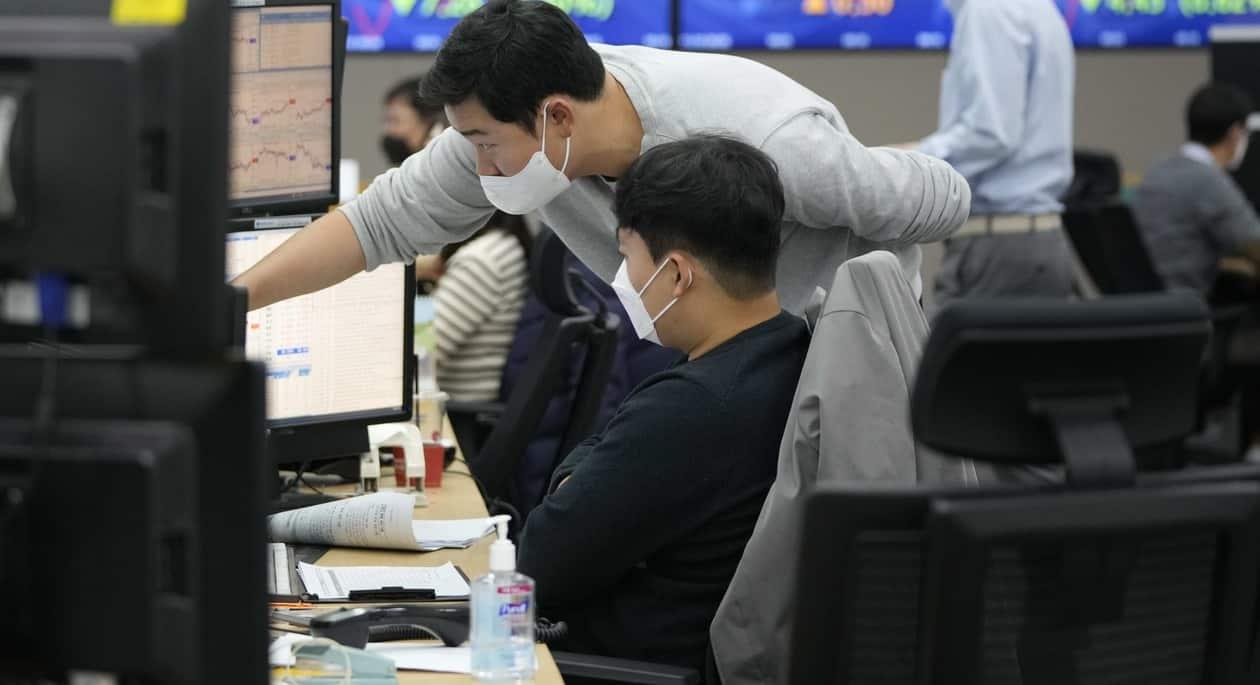(Bloomberg) -- The clearest sign yet that the Federal Reserve’s campaign against inflation is slowing price gains jolted risk assets higher across Wall Street.
Futures on the S&P 500 spiked, short-term Treasury yields sank and the dollar weakened versus major peers after the consumer price index accelerated less than forecast in September. With S&P 500 futures up 3%, the stock market is poised for the best first-day reaction for a CPI report since 2008.
Cooling inflation reinvigorated speculation that the Fed will slow the pace of interest-rate increases and potentially halt hikes sooner than the market currently anticipates. Already swaps traders scaled back bets for another 75 basis-point hike in December.
Here’s the immediate reaction across Wall Street:
Priya Misra, head of global rates strategy at TD Securities
Huge market reaction and the bull steepening reaction makes sense. Before the number, the market was priced for 59bp for December and a terminal rate of 5.07% was priced in. This should lower pricing for both but the Fed will need a few months of this to signal a pause. Inflation is still high and broad-based so not an end of the hiking cycle but they can slow down for sure. It wasn’t just one component that fell. That’s what makes this a legitimate decline. It was a broad-based decline. We expect used care and medical care services to fall. Other declines added to it.
Florian Ielpo, head of macro research at Lombard Odier Asset Management
Inflation retreats for the fourth consecutive month: it has become hard to deny that the Fed’s medicine is working -- with lagged effects. With the Fed’s rates’ plateau that is now upon us, time has come to load up on bonds and let the equity run go. The bond trend looks a lot more long lasting than the equities, but without a recession, sentiment is likely to support equity valuations until year-end.
John McClain, portfolio manager at Brandywine Global Investments
The market continues to prove it has no ability to predict the path of inflation. Finally we see a report that shows some progress towards pushing inflation lower. I doubt this changes the Fed’s mindset as this is simply one data point.
Bryce Doty, senior vice president at Sit Investment Associates
Hard to believe that a 7.7% year over year inflation rate is reason for celebration, but the 0.3% monthly change in core CPI reduces pressure on the Fed to raise rates another 0.75% at their next meeting; so a relief rally in both stocks and bonds.
Marija Veitmane, senior strategist at State Street Global Markets
The weakest core print all year. Fed and market should like this … gives them an indication that the end of the aggressive hiking cycle is close. Especially as the weakness is in the services. And signals that shelter prices are peaking, which are slow to move, so it would be strong indications the economy is cooling as a result of higher interest rates.
Richard Flynn, managing director at Charles Schwab UK
Although inflation has fallen, it remains high. Last week, the Fed continued its aggressive cycle of rate hikes and dashed hopes that it might stop tightening monetary policy anytime soon. The central bank does not want to risk inflation becoming entrenched. Despite today’s figures, interest rates are likely to end up higher than investors expected when the Fed commenced its cycle of rate hikes earlier this year. It’s worth remembering that monetary policy typically acts with a lag.
Phillip Neuhart, director of market and economic research at First Citizens Bank Wealth Management
Inflation came in below expectations but remains historically high. We believe the Federal Reserve will continue to tighten monetary policy until it is clear inflation is in a persistent downtrend, and this report, while welcome news, does not give the Fed much reason to materially change course.
Zhiwei Ren, portfolio manager at Penn Mutual Asset Management
Quite a surprise on lower inflation -- the market will love this. This means the Fed doesn’t have to hike to 5%, and maybe inflation will come down faster than the market had feared. But, this is just one print. now we will wait to see the next. CPI will fall to 3-4% fairly easily. Where it goes after that is the real question.
Dennis DeBusschere, founder of 22V Research
For the markets, this is clearly positive near term. We already know that demand growth is below trend, household employment was very weak and layoff announcements are accelerating. Oh, and housing data is very weak. Terminal rate will come down -- 2-year rates are headed lower. The real action will be in the back-end of the fed funds futures curve. Will the market start to price aggressive cuts again? If so, rally will extend until the Fed pushes back on cuts being priced.
